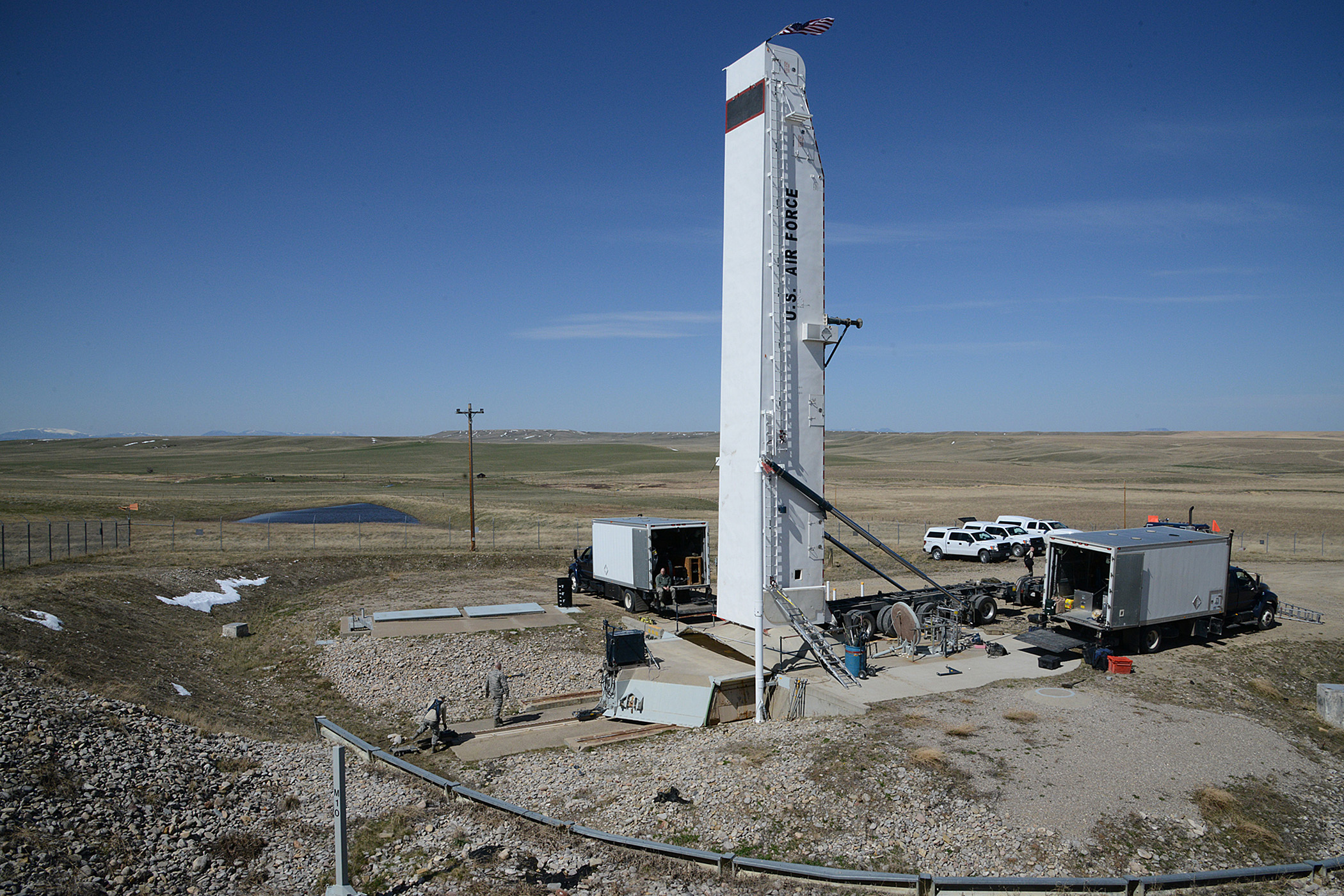A launch facility operated by Malmstrom AFB, Mont., is shown April 13, 2017. Air Force photo by SSgt. Delia Marchick.
The Air Force completed the first programmed depot maintenance of a nuclear launch facility since its activation in the 1960s.
The first launch site belongs to Malmstrom AFB, Mont. The remainder of the sites at Malmstrom, F.E. Warren AFB, Wyo., and Minot AFB, N.D., will be completed over the next eight years and will then remain on an eight-year PDM cycle.
Gen. Ellen Pawlikowski, commander of Air Force Materiel Command, visited all three ICBM bases last week including a May 10 visit to the Malmstrom site where members of the 583rd Missile Maintenance Squadron, formerly Rivet Mile, were completing their work.
Pawlikowski said the Air Force was applying the best practices on managing weapons systems to ICBMs and is now using the same PDM model as the aircraft community. Because the nuclear launch facility can’t go to the depot, the maintainers have to go to it. Because of that, Pawlikowski said there have been parts that haven’t been touched in 30 to 40 years.
To conduct the maintenance tasks, the missile is pulled from the site so maintainers can replace worn parts, take pieces apart and remove corrosion, replace cables, and other major maintenance.
In the past, “we waited until things started to break,” Pawlikowski said. Now, her command, in conjunction with Air Force Global Strike Command, is planning maintenance around the known life cycle of parts and developing a new supply chain since, in some cases, needed parts are no longer manufactured.
Wing commanders and operations group commanders decide which sites are taken down for PDM at each missile base, Pawlikowski said, to ensure nuclear readiness isn’t impacted.
The first completed launch facility is expected to be turned back over to the 341st Missile Wing by the end of the month.
Pawlikowski said the first site has been challenging, but it’s helping the PDM teams develop lists of what will need to be done at the next sites. She also noted that things will need attention before the eight-year cycle repeats.
Chief of Staff of the Air Force Gen. David Goldfein and AFGSC boss Gen. Robin Rand wrote in a? May 12 op-ed for Politico that “although the two Air Force legs of the triad have proven remarkably resilient, they are growing old. Our Minuteman III intercontinental ballistic missiles have been around since the 1970s. The infrastructure and support platforms that underpin our ICBMs, such as launch facilities, weapons storage facilities, and security helicopters have been in service for even longer.”
Pawlikowski’s command is also handling the requests for proposals and contracting process of the Huey replacement program for missile bases and the Ground Based Strategic Deterrent, which will replace the existing Minuteman III system currently in place.
The second draft RFP is out for the Huey and Pawlikowski said the draft process is allowing the Air Force to make sure the requirements are understood and are something industry can meet within reasonable price points.
The omnibus spending bill included $93 million for the Huey replacement program. Another industry day was held last week, and according to Air Force documents, responses to the draft RFP are due May 19 with a final RFP expected to be released in July, and a contract award projected for next summer.
Pawlikowski said the dialogue with industry has allowed the Air Force to find out more about what’s available and price points that can allow AFGSC to possibly adjust their requirements.
For GBSD, the Air Force is currently in source selection and could award up to two contracts for the technology maturation and risk reduction phases by this fall. Pawlikoski said the process was still on track for that timeline, but if the source selection team determined they need more time, they’ll take it.
In their May op-ed, Goldfein and Rand wrote that investments in the nuclear deterrent represent about five percent of the overall military budget over the next decade.
“While not an insignificant bill, history has shown the nation’s outlays supporting our strategic deterrent are well worth the investment, especially when compared to the costs—financial and in lives lost—of world wars that we have not experienced since 1945.”
